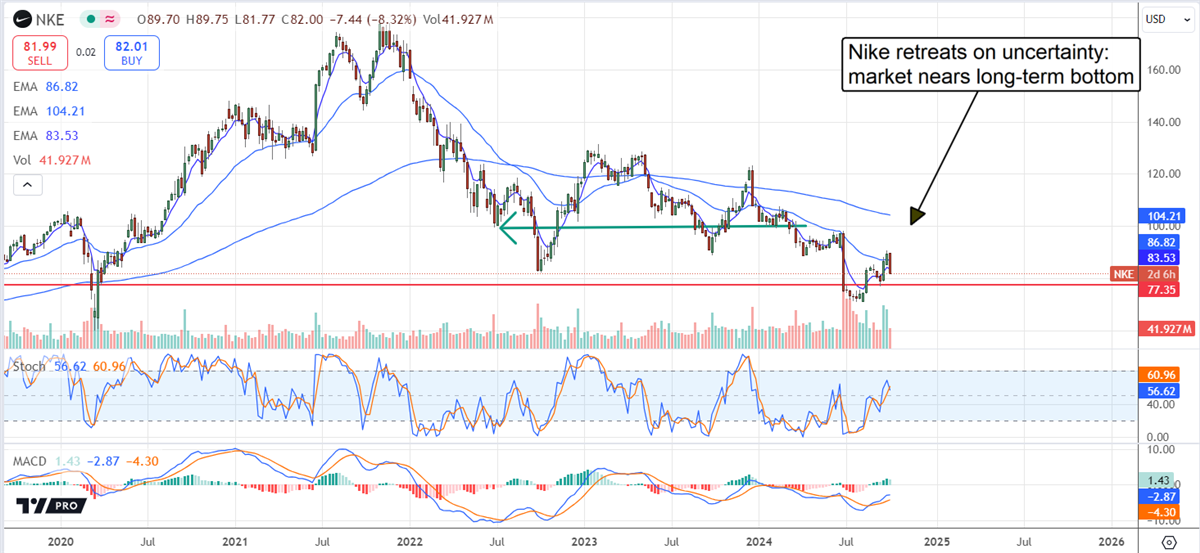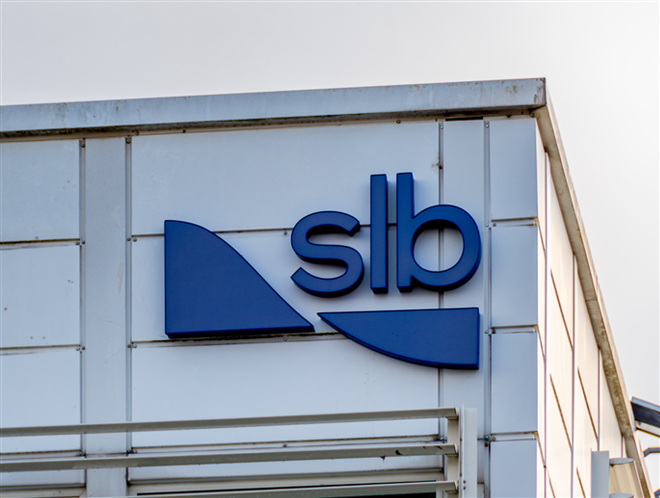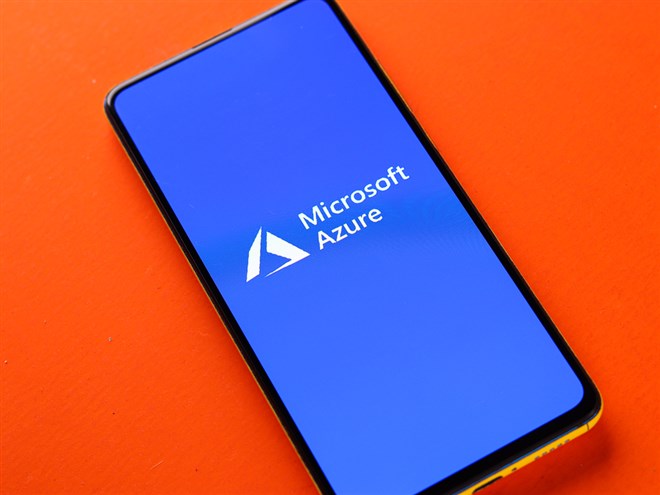Ticker Reports for October 2nd
S&P 500 Hitting Resistance: These 3 Stocks Offer the Best Upside
At many points in September, investors heard about the S&P 500 hitting a record high. But at several points in that month, the index pulled back instead of moving higher. This is called a resistance level, a technical point where buying activity weakens, leaving room for sellers to come in.
You're well aware of this price movement if you’re invested in an exchange-traded fund (ETF) such as the SPDR S&P 500 ETF Trust (NYSEARCA: SPY). The SPY is up just 0.29% in the 30 days ending October 1.
But if you’re investing in individual stocks, this choppy price action can be an opportunity to look for stocks with strong fundamentals that are being overlooked by investors. These are the stocks that have the best opportunity for strong gains. To find this group of stocks, we used the MarketBeat stock screener to find S&P 500 stocks trading within 30% of their 52-week low with a forecast for at least 10% upside in earnings in the next 12 months.
A Breakout Stock in a Breakout Sector
SLB Inc. (NYSE: SLB), formerly known as Schlumberger, is an oilfield services company. The company’s revenue and earnings are less sensitive to the price of crude oil but highly sensitive to CAPEX spending. In the last year, many of the major oil companies have been making up for years of underspending as the price of oil has moved higher.
That’s reflected in the company’s last four quarters, in which they reported year-over-year double-digit revenue and earnings growth. The price of oil is likely to continue climbing in 2025 regardless of the outcome of November’s election, which makes SLB stock and its 2.5% dividend yield attractive, particularly with the stock trading near two-year lows.
The SLB analyst forecast on MarketBeat gives the stock a consensus price target of $65.29, which gives investors the potential for 48.5% upside from the stock’s closing price on October 1, 2024.
This Lithium Stock Is a Solid Play as China Stocks Soar
China stocks are making a strong recovery as the Chinese government has unleashed a wave of stimulus programs to boost the country’s struggling economy. If you believe in the economy’s recovery, it bodes well for electric vehicle (EV) sales.
However, many investors may still feel that it’s too risky to buy China stocks. A company that is adjacent to China stocks is Albemarle Corp. (NYSE: ALB). The lithium miner’s stock is down over 34% in 2024 as the price of lithium has declined as has the company’s free cash flow.
Albemarle’s turnaround may not be immediate, which explains the consensus Hold rating on the stock. However, ALB stock looks to be forming a bottom around $72. And the Albermarle analyst forecasts on MarketBeat give the stock a $117.10 price target which is 26% higher than its price on October 2. And investors get a dividend that the company has been increasing for 30 consecutive years.
Despite Supply Chain Concerns, This Undervalued Medical Stock Is Worth a Look
McKesson Corp. (NYSE: MCK) is one of the undervalued medical stocks in the S&P 500. The company is a global leader in healthcare that partners with care providers, pharmacies, and manufacturers to deliver the right medicines, products and healthcare services to the right patients at the right time.
MCK stock is up 7.6% in 2024 but is down approximately 14.7% in the last three months. The company last reported earnings in August and missed on the top line. One issue affecting the company is delays in getting GLP-1 drugs. Demand simply outpaces supply.
To be fair, this issue is likely to get worse if the port strike lasts for any length of time. That could weigh on MCK stock in the short term.
However, analysts are still forecasting a 10% increase in the company’s earnings. They also give the stock a consensus Moderate Buy rating with a price target of over $613, which is more than 24% above its current price. Investors also get a dividend that has increased at an average rate of 11% in the last three years. The company may increase the payout now that it is done buying back its shares.
Unlock 2024's Top Stock! 🌟
Ready to discover the standout stock of 2024? We've identified a single buy & hold gem that's poised to redefine your portfolio. Download our exclusive report now and dive into the Insights. Click below to opt-in and receive up to two additional free bonus subscriptions. Unsubscribe at any time.
Get Your Free ReportNike's Post-Earnings Drop Presents a Buying Opportunity
Nike (NYSE: NKE) shares fell after the Q1 report, which opened an opportunity for investors. The fall is due to numerous factors, including weaker-than-expected results, revoked guidance, and a CEO transition that is ultimately expected to turn the company around. The takeaway is that Nike faces headwinds and has a long road to recovery, but market support remains firm, and recovery is expected. The question is if now is the right time to buy or if the stock will make a deeper correction before the rebound begins.
The analysts are trimming targets but have yet to make any downgrades. The 19 MarketBeat tracks have the stock pegged at a Moderate Buy and trading near a floor in the low $70s. With this dynamic in play, the market will likely bottom soon and begin to rebuild the base. The critical drivers for the action going forward will be a recovery in wholesales and product innovation, the primary reasons for the company's weakness today. Nike’s leaning into direct-to-consumer sales eroded wholesaler support, exacerbating market share losses related to innovation.
Nike did not make any significant product innovations for years until 2024, losing market share to start-ups like On Holdings (NYSE: ONON) and legacy shoemakers like adidas (OTCMKTS: ADDDF) and Deckers Outdoors (NYSE: DECK). On Holdings is growing at an industry-leading double-digit pace while Nike flounders in contraction. Even so, the new Nike pipeline depends on updates to existing Air technology, athlete partnerships to drive product changes, and streamlined production, which may not yield results quickly. The best estimates are for the changes to take effect in early 2026, more than eighteen months away.
Nike Had a Tough Quarter, But Not a Bad One
Nike had a tough time in Q1, but the business remains profitable, producing positive cash flow sufficient to sustain balance sheet quality and capital returns. The company reported $11.6 billion in net revenue, down 10.4% compared to last year, falling short of the consensus estimates but beating the bottom line. Revenue was impacted by weakness in Nike and Converse brands, DTC, and wholesales, with a contraction in the core footwear and apparel categories. Equipment is the single area of strength, up 34%, aiding bottom-line results.
The margin news is also mixed, with gross margin and selling, general, and administrative expenses (SG&A) improving but offset by increased sales and tax expenses. The takeaway is that net income is down 28% year over year, and the diluted GAAP EPS is 26% but well above forecasts, reflecting operational improvements and quality. The net result is $0.70 in GAAP EPS, which is more than 3500 basis points above consensus, with margin quality expected to continue in the coming quarters.
The details that spooked the market are the retracted full-year guidance and delayed investor day conference, which brings an element of uncertainty to the outlook with the CEO change due soon. As it is, the company expects Q2 revenue to be down 8% to 10%, putting the H1 outlook in alignment with the prior forecast.
No Red Flags on Nike’s Strong Balance Sheet: Capital Returns Can Run
As troubled as Nike is, the company produced a positive cash flow quarter and improved its balance sheet while sustaining dividends and share repurchases. The share repurchases topped $1 billion for the quarter, helping to reduce the average count by 2.7%, and will likely continue as the fiscal year progresses.
The dividend is also safe at roughly 50% of the quarterly earnings. However, the pace of annual increase will likely slow from double-digits into the low single-digits until growth is reinvigorated. Regarding the balance sheet, cash and assets are up compared to last year, and debt and equity are relatively flat, leaving the company in a net-cash position relative to its debt, with leverage low at 0.6x equity. Nike has work to do but is in a solid financial position, capable of making the necessary moves to achieve its goal.

AI Expert Reveals New Pick
Everyone's talking about AI right now, but I've been talking about it for years.
And now I've just released my latest prediction and believe it or not, I'm advising NOT pour all your money into Nvidia right now
Microsoft's Targeted Upside Might Be Too Good to Ignore
Since hitting a record back in July and then selling off, shares of tech titan Microsoft Corp. (NASDAQ: MSFT) have been a bit slower than others in getting back to highs. For context, the benchmark S&P 500 index was hitting fresh highs by the middle of September and, as recently as Monday, was closing at a new record.
Confirmation from the Fed that they’re going to start cutting rates and continuing signs that inflation is cooling have combined to re-ignite the risk-on sentiment that controlled stocks for much of the first six months of the year. Against the S&P 500’s 12% gain from its August lows, Microsoft has tacked on as much as 14%, but a week of losses means it’s holding on to less than 10% of them right now.
However, despite what appears to be this lackluster performance, there are several reasons to think that Microsoft is a solid buy right now and that any further selling will only boost its risk/reward profile. Let’s jump in and take a look.
Microsoft's Fundamental Performance
To start with, let’s look at Microsoft’s fundamental performance. It’s worth pointing out that Microsoft’s most recent earnings report had a lot to do not only with its stock’s selloff in August but also with the bullish outlook investors and analysts have for it. The company smashed analyst expectations on both its headline numbers, which was always a good sign but then provided lighter-than-expected forward guidance for revenue from its Azure cloud unit.
Considering how softly Microsoft shares had been trading throughout July, it was understandable that a weak outlook like this sent them even lower. But what really compounded matters was the fact that the broader market started sinking the following week, as a dodgy jobs report ignited concerns that the Fed had delayed cutting rates too long.
Wall Street Targets Suggest Major Upside for Microsoft Stock
However, for those of us on the sidelines thinking about getting involved, there’s actually a lot to like here. Despite issuing weak forward guidance for a key part of the business and then enduring one of the wider stock market’s worst weeks in years, shares of Microsoft have been gaining since the first week of August. Not only have they been gaining, but they’ve been setting a pattern of higher, lower, and higher highs. This is one of the most bullish setups out there and indicates that there is a constant source of demand for Microsoft shares during any dip.
Considering the stock has fallen about 5% in the past two weeks alone, we could soon see this source of demand being tapped again. Beyond the promising technical performance, Microsoft shares are also enjoying the benefit of being highly rated by Wall Street analysts.
Take DA Davidson, for example, which reiterated its $475 price target on Microsoft shares in the last week of September. From where the stock closed on Tuesday evening, that suggests a targeted upside of nearly 15%. There’s also the $506 price target from Morgan Stanley last month and the $550 target from Wedbush in the aftermath of Microsoft’s earnings. It’s not often that analysts call for a potential upside of 30%, but that’s the case with Microsoft.
The Bottom Line: Microsoft’s Dip Could Be a Strong Buying Opportunity
Some concerns are worth noting, such as those of Allspring Global Investments, which noted earlier this week, "There’s some AI fatigue when it comes to companies like Microsoft, given the incredible run they’ve had.” There have also been some unfavorable comparisons between Microsoft and Oracle Corporation (NYSE: ORCL) in this regard, given the fact that the latter is trading at a lower valuation.
However, aside from the weaker-than-expected Azure update, which has surely been properly baked into Microsoft’s shares by now, there are far more reasons to like the stock than to avoid it. The technical case is strong, while the analysts' targeted upside speaks for itself. Let’s see if the current dip can start finding some buyers in the next few sessions and turning north once again.







No comments:
Post a Comment